Attention Cat Owners: These Household Plants Are Toxic to Felines
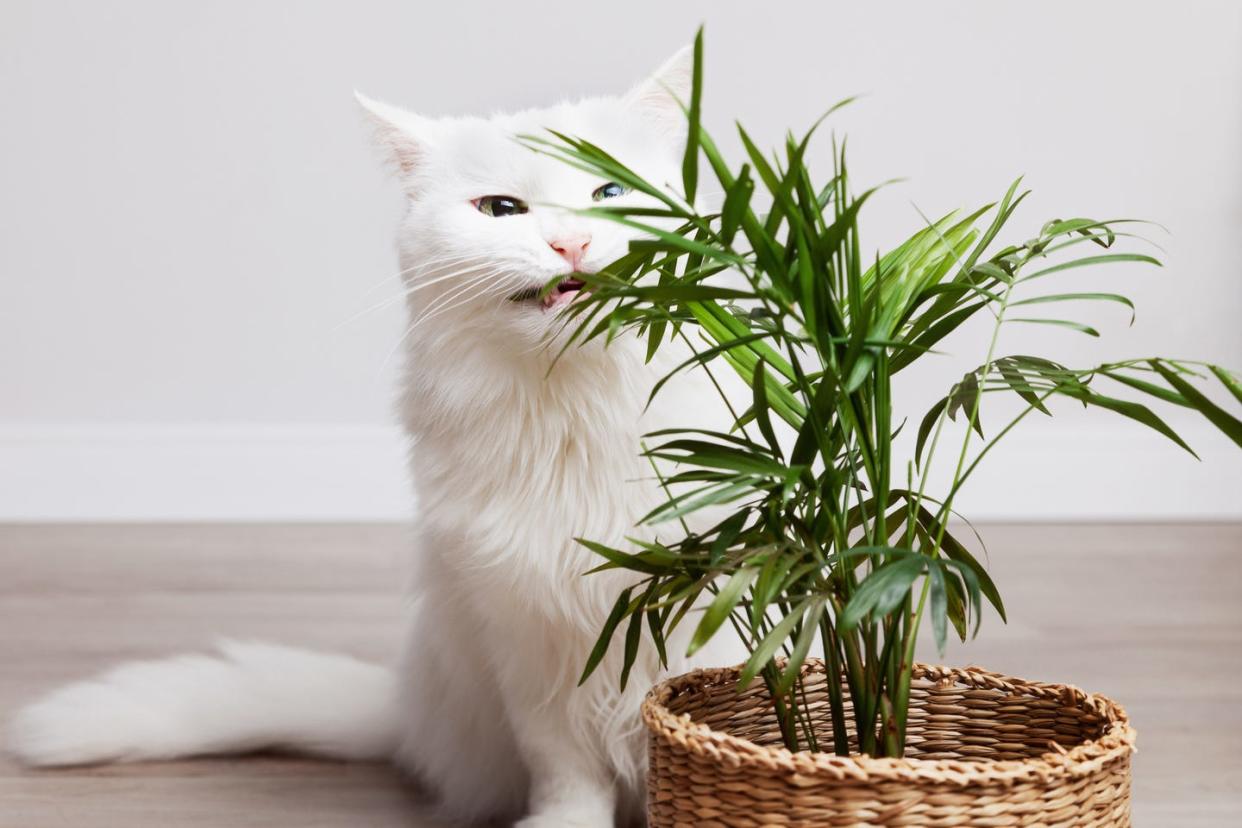
Cats are curious creatures, always exploring and nibbling on anything that catches their eye. While their adventurous nature is endearing (and part of why we love them so much), it can also be dangerous, especially when it comes to certain plants. Many common houseplants and garden favorites can actually pose serious health risks to our feline friends, so you should which plants are toxic to cats.
We spoke to a veterinary expert, Dr. Shannon Leonard, DVM at Central Animal Hospital in Florida, to help you identify which greenery to avoid to keep your furry companions safe—and what you should do if they happen to get into something they shouldn't. According to Dr. Leonard, "Poisons, or toxicants, are substances that can interfere with biological functions and processes when introduced to the body. It is important to be aware of common plants that may be harmful to your pet and what signs to look out for."
It's also important to note that some plants are much more toxic than others, like lilies. You can replace your toxic plant with plants that are pet-friendly or make sure the plant is well out of reach of your cat. But Dr. Leonard stresses, "If your cat is experiencing the following symptoms it is important to seek veterinary attention: vomiting, diarrhea, drooling, neurological signs such as muscle tremors, seizures, disorientation or uncoordinated movements, panting or increased respiratory rate, lethargy, changes of the skin such as rashes or swelling."
Check out even more important information related to your pet:
Lily
Though lilies are delightful to look at, they're actually deadly to cats. All lilies in the Lilium genus, including Easter lilies, can damage a cat's kidneys and lead to kidney failure. All parts of the plant, including the pollen, leaves, and petals, are dangerous. Dr. Leonard emphasizes, "It is very important to take your pet to a veterinarian as soon as possible for diagnostics, including but not limited to bloodwork and urine tests. Early and aggressive medical treatment is critical for your pet's survival, and they may need to be hospitalized.”
Toxic Components: Unknown
Safe Alternative: Orchids
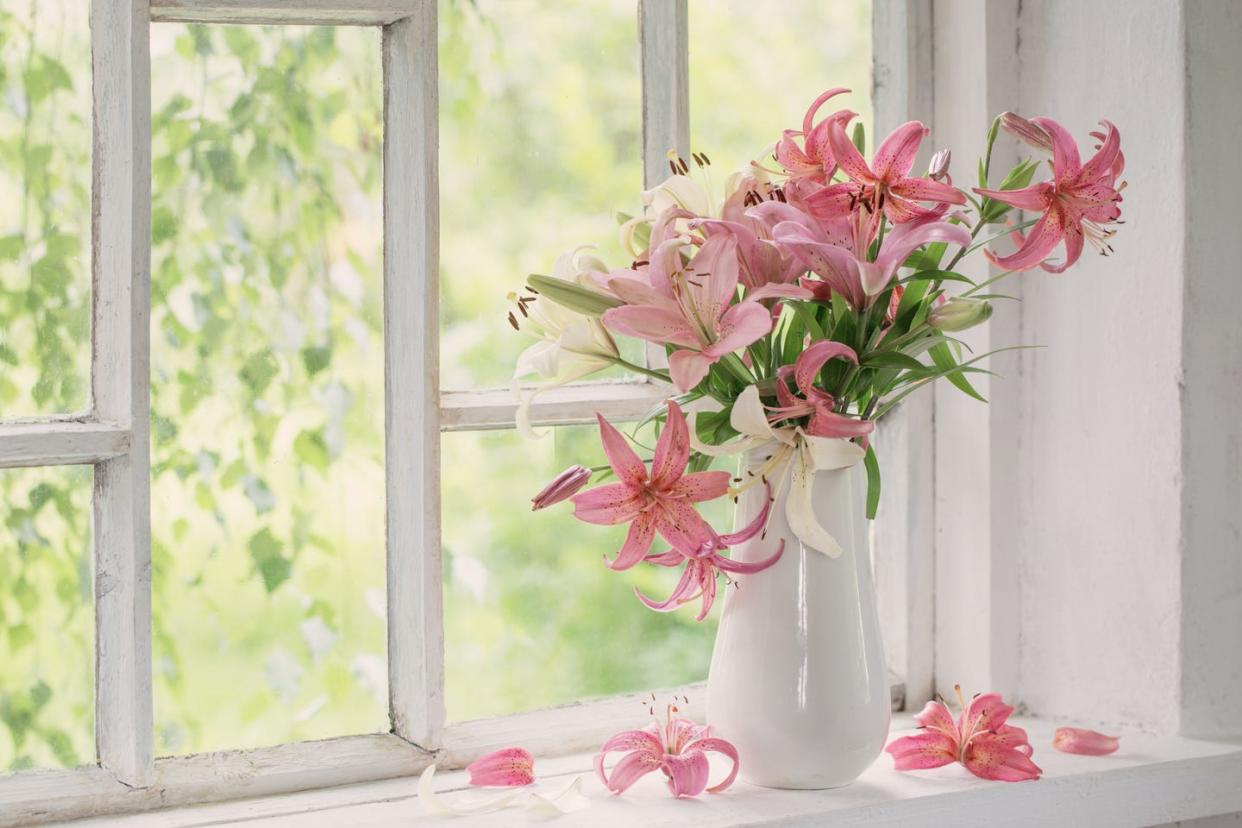
Snake Plant
Your kitty shouldn't be around snakes, and they shouldn't be around snake plants either! This common houseplant contains organic chemicals which can cause nausea, vomiting, and diarrhea if ingested. While symptoms are typically mild to moderate, you still shouldn't take any chances.
Toxic Components: Saponins
Safe Alternative: Caeroba
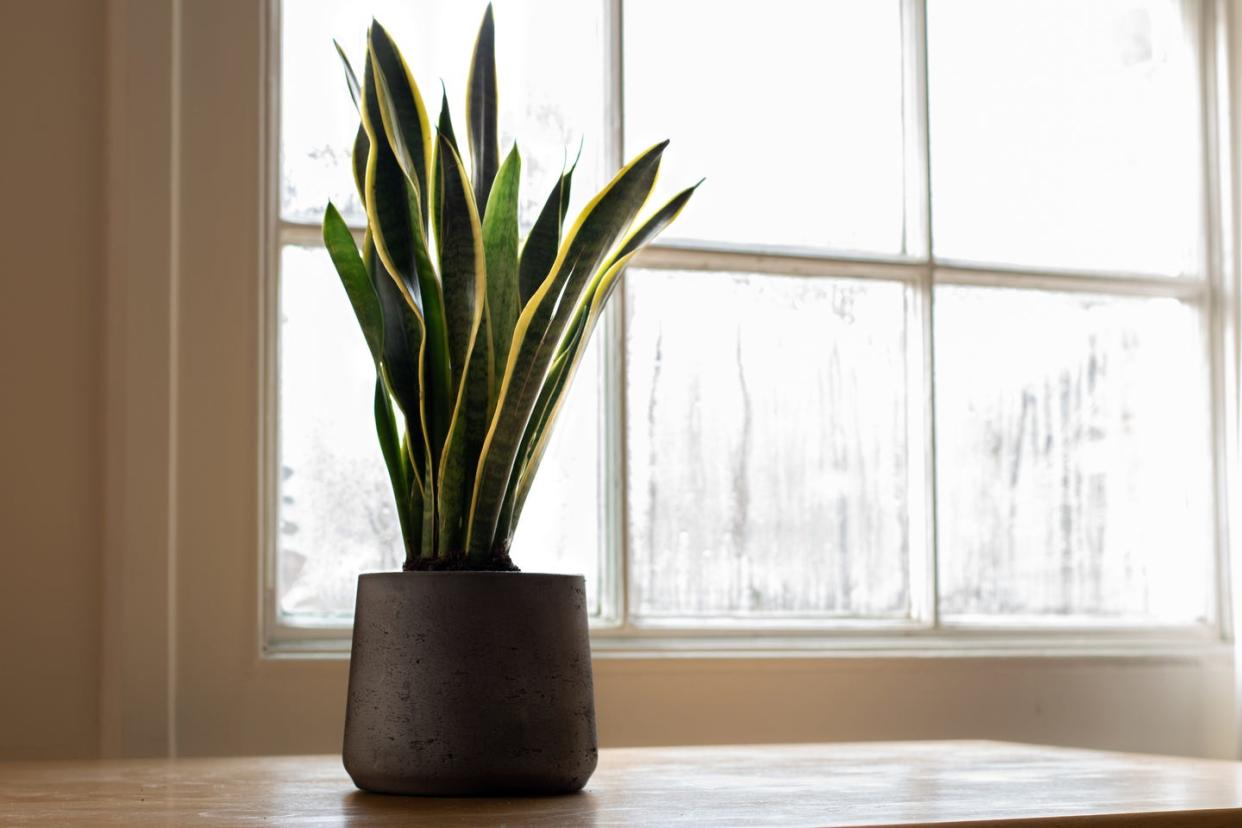
Sago Palm
Though you may wish for a tropical atmosphere in your home, you'll want to avoid sago palms when trying to achieve that. This plant is highly toxic to cats, with its seeds being the most dangerous part. But ingesting any part of the plant can lead to liver failure, vomiting, diarrhea, and even death if not treated promptly.
Toxic Components: Cycasin
Safe Alternative: Parlor palm, areca palm
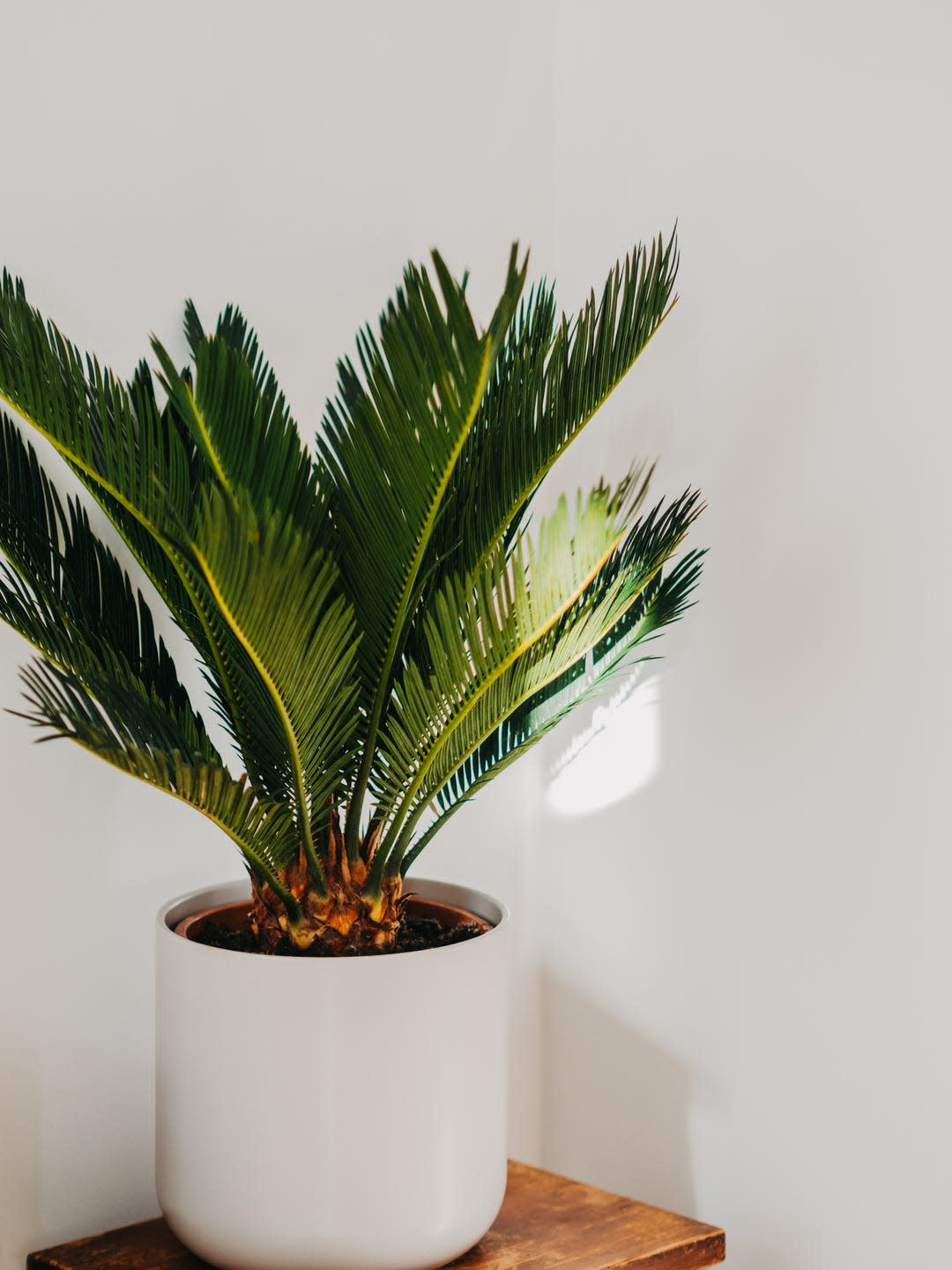
Peace Lily
While they're popular for their pretty leaves and air-purifying qualities, you shouldn't have peace lilies if you have kitties. Dr. Leonard explains, "True and day lilies are types of plant that cause kidney damage while other lilies such as peace and calla lilies can affect other organ systems." Ingesting the plant can cause oral irritation, drooling, vomiting, and difficulty swallowing.
Toxic Components: Insoluble calcium oxalates
Safe Alternative: Cast iron plants
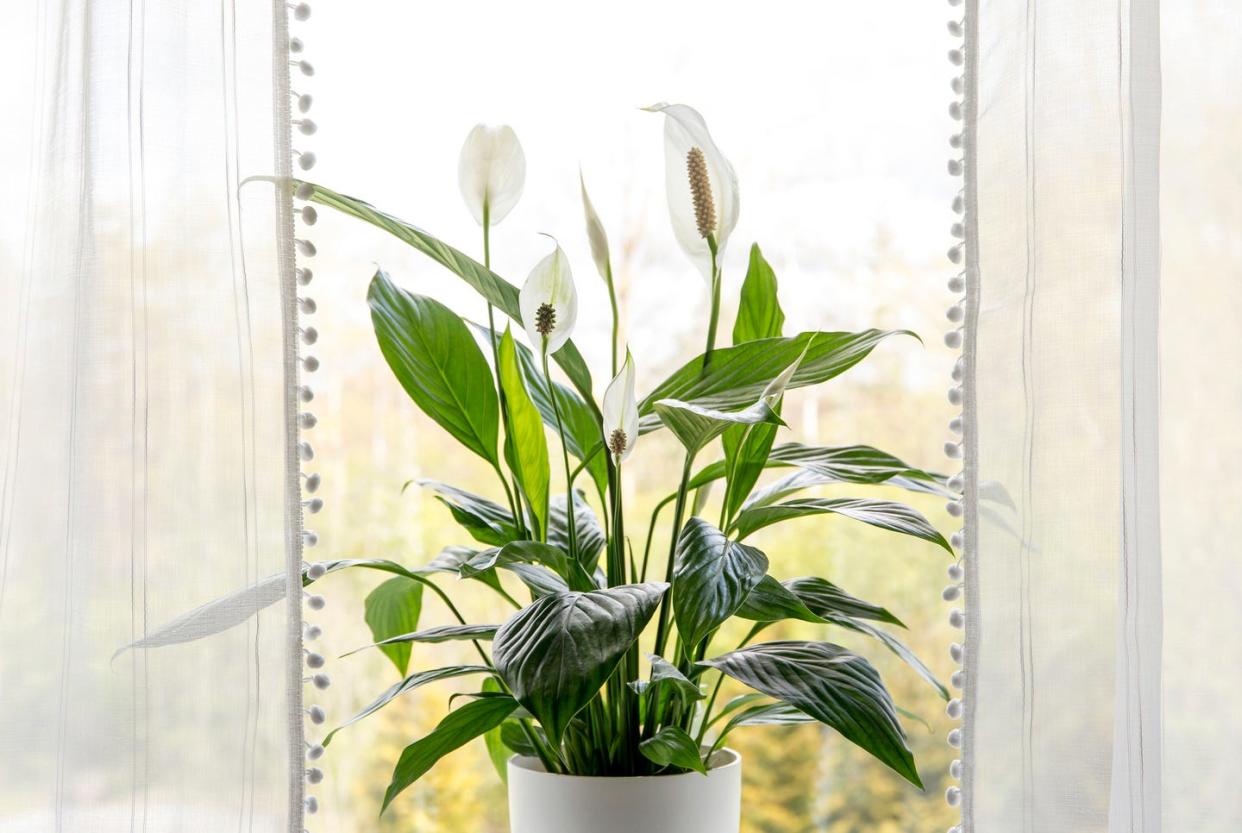
Hyacinth
Hyacinths are beautiful, fragrant flowers that are often used in gardens and as decorative houseplants, but they pose a risk to cats. When they chew on or swallows parts of the plant, it can cause intense oral irritation, including drooling, pawing at the mouth, and difficulty swallowing. Ingesting larger quantities can lead to more severe symptoms, such as vomiting, diarrhea (occasionally with blood), depression, and tremors.
Toxic Components: Alkaloids, including lactones
Safe Alternative: Snapdragon, common lilac
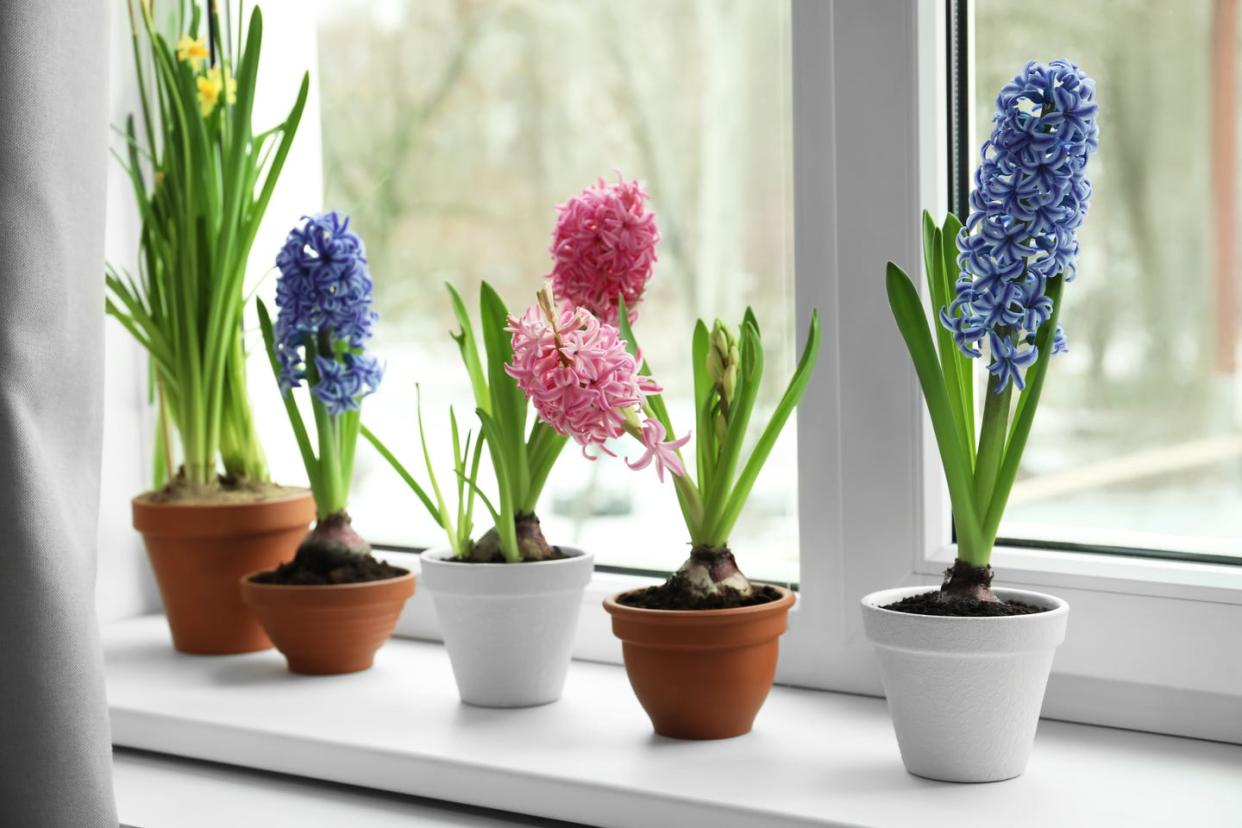
Aloe Vera
While aloe vera is often praised for its healing properties, it’s not safe for cats. Although the gel is considered edible, ingesting the thick plant part can cause gastro upset like vomiting and diarrhea along with lethargy.
Toxic Components: Saponins, anthraquinones
Safe Alternative: Haworthia
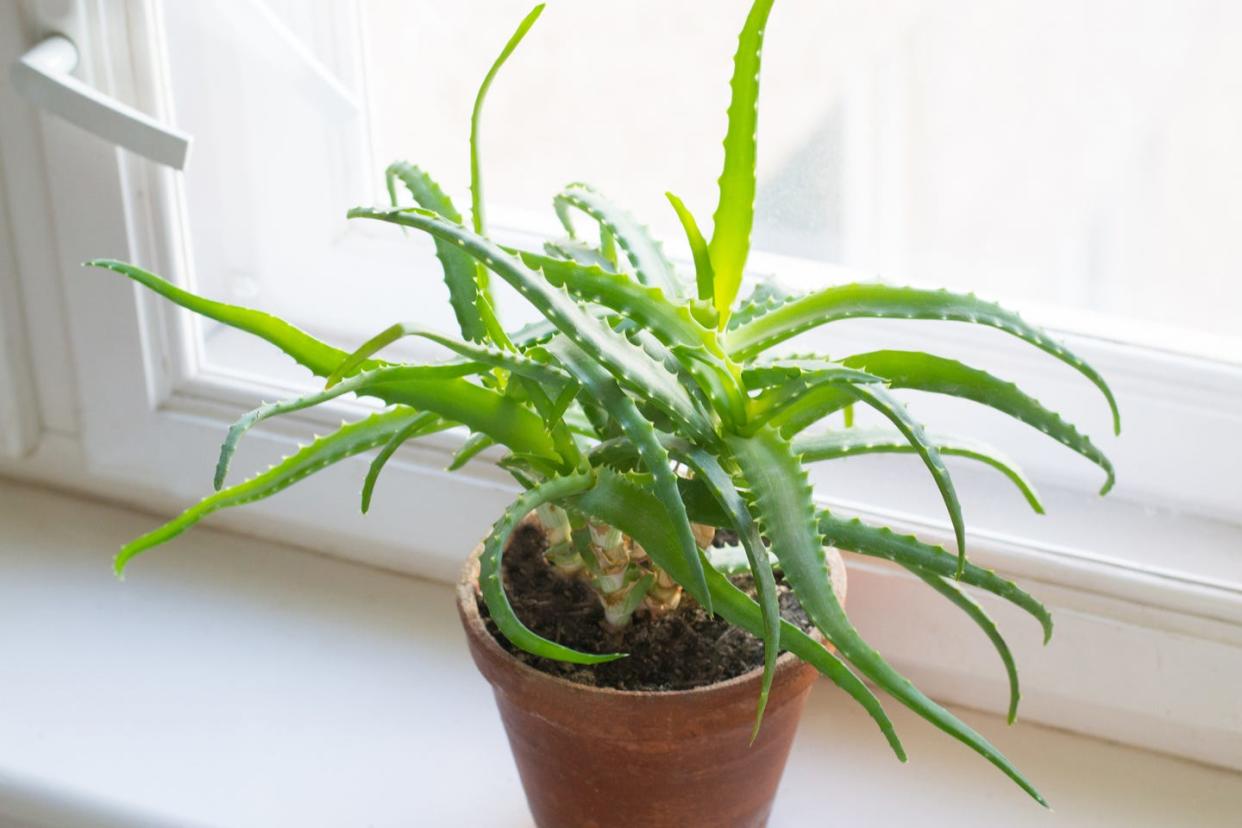
Cutleaf Philodendron
A popular houseplant thanks to their large, tropical-looking leaves, the cutleaf philodendron is highly toxic to felines. If they take a bite, your cat could experience oral irritation, intense burning of the mouth, tongue and lips, excessive drooling, vomiting, and difficulty swallowing. In extreme cases, they may even have respiratory issues.
Toxic Components: Insoluble calcium oxalates
Safe Alternative: Prayer plant
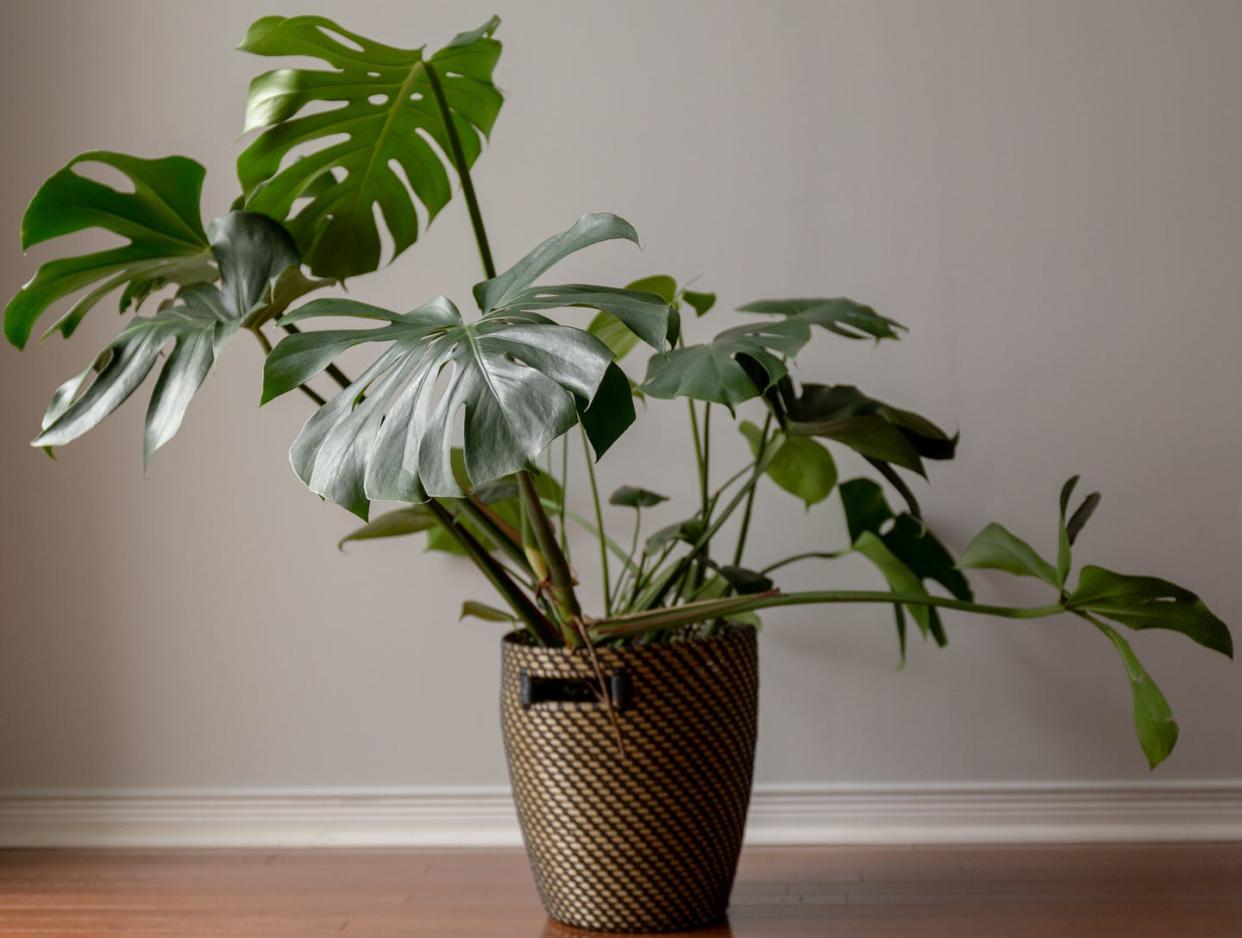
Daffodils
They might be bright and cheery to you, but daffodils can be fatal to cats if ingested in large amounts. The flowers, leaves, and bulbs are all toxic, but bulbs have the highest concentration of toxicity. In small quantities, this floral can cause gastrointestinal issues, vomiting, diarrhea, and drooling.
Toxic Components: Lycorine and other alkaloids
Safe Alternative: Nasturtium
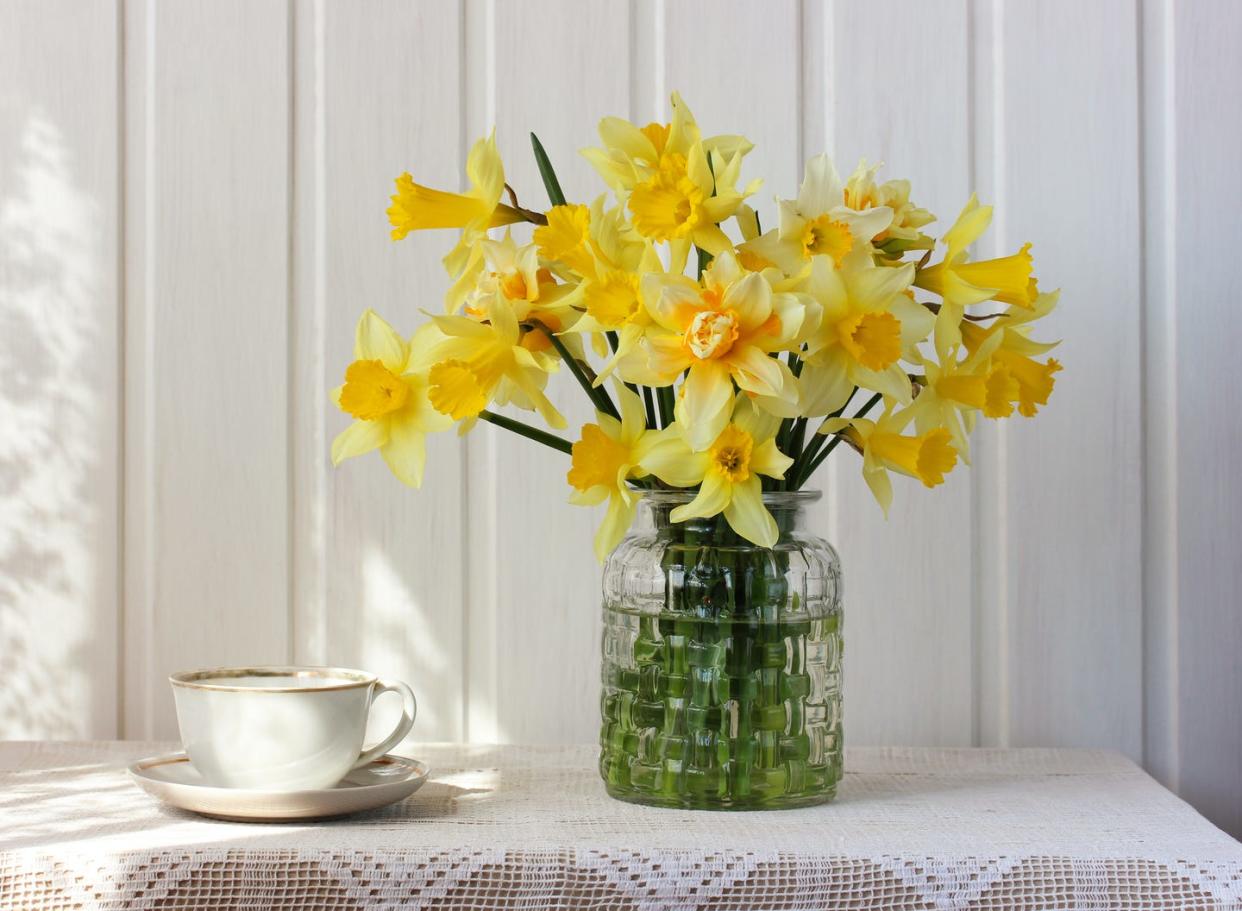
English Ivy
The draping leaves on this one make it a popular plant to display, but that same feature also makes it an attractive snack for inquisitive kitties. Unfortunately, English ivy is very dangerous when ingested, causing vomiting, abdominal pain, hypersalivation, and diarrhea.
Toxic Components: Triterpenoid saponins (hederagenin)
Safe Alternative: Swedish ivy
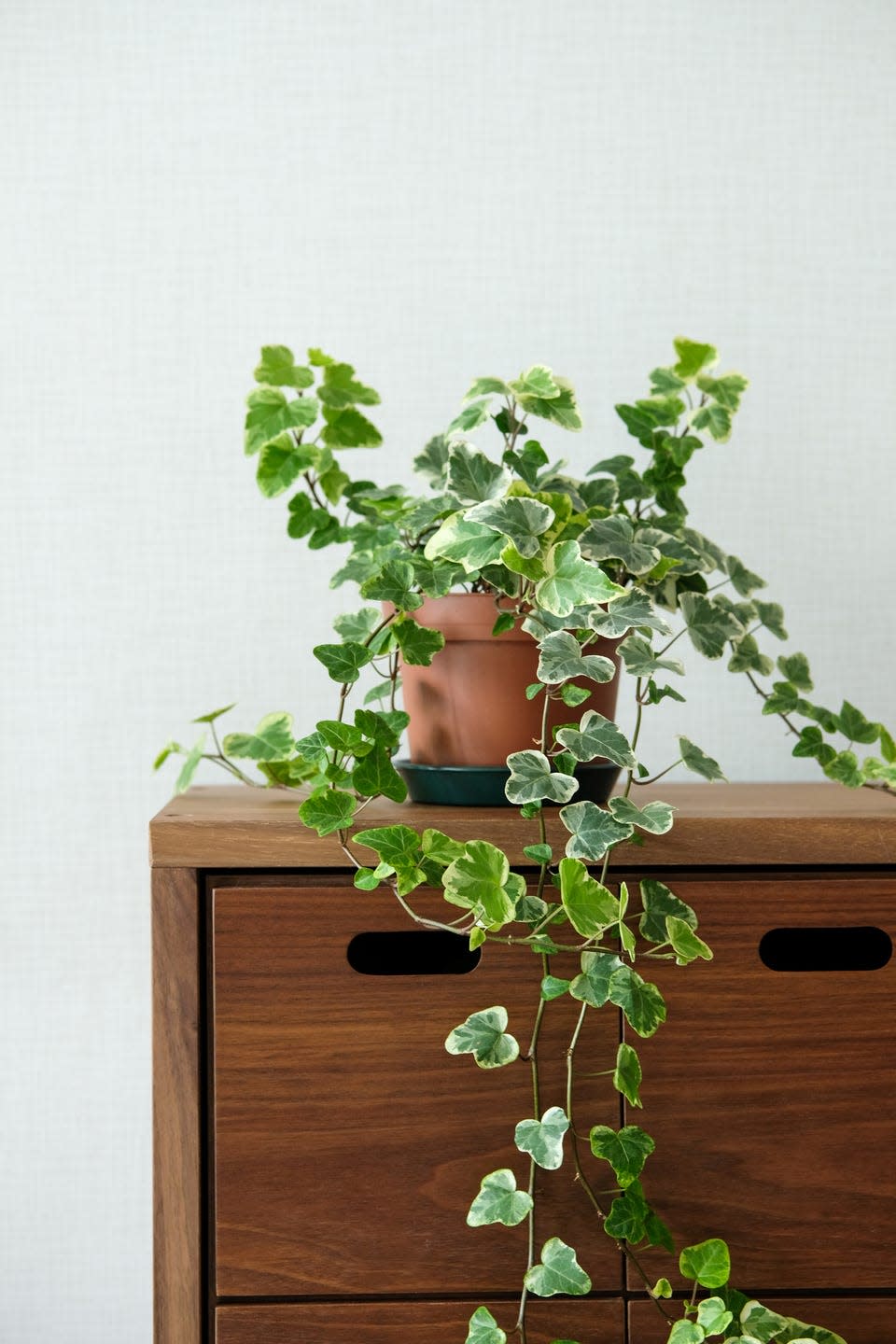
Dumb Cane
Dumb cane (or Dieffenbachia) comes in many varieties—all of which are toxic to cats. If the plant is ingested, symptoms include intense oral irritation, drooling, vomiting, and difficulty swallowing. The plant’s sap can also cause skin irritation.
Toxic Components: Insoluble calcium oxalates, proteolytic enzyme
Safe Alternative: Prayer plant
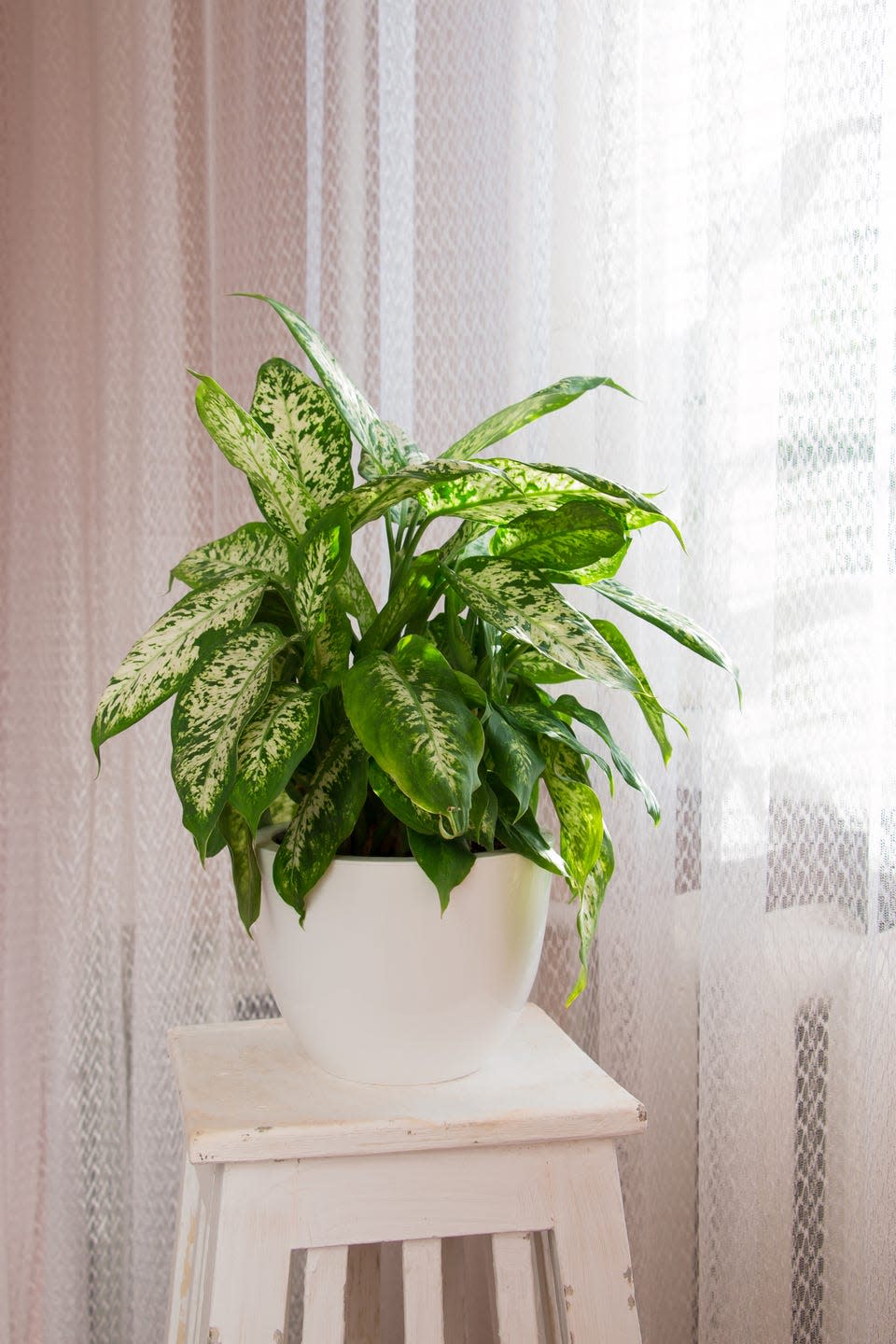
Tulips
Tulips are a tough one to give up, but your cat will thank you later! The entire plant is toxic, but the bulbs are the most toxic part, containing compounds that can cause vomiting, diarrhea, and depression. Cats that chew on tulips may also experience drooling, oral irritation, or even convulsions and cardiac abnormalities.
Toxic Components: Tulipalin A and B
Safe Alternative: Roses

Pothos
Due to the toxic nature of this plant, it's not a good greenery choice for any cat owners. Also known as devil's ivy, golden pothos, and taro vine, pothos can lead to oral irritation, intense burning of the mouth, tongue and lips, excessive drooling, vomiting, and difficulty swallowing.
Toxic Components: Insoluble calcium oxalates
Safe Alternative: Chinese money plant
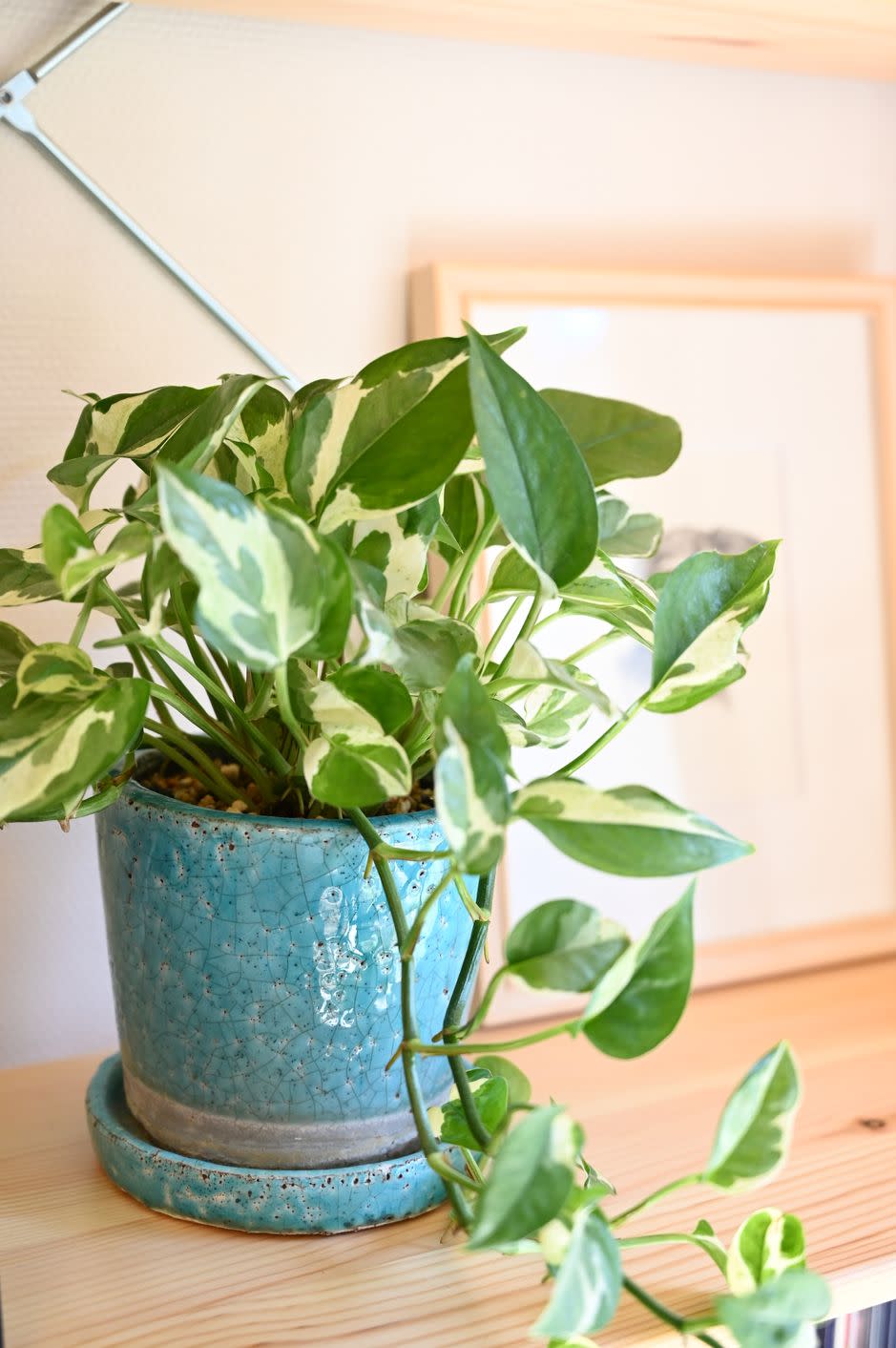
Kalanchoe
It might be hard to resist the colorful blooms on this succulent, but you'll want to for the sake of your furry friend. Closely related to toxic jade plants, this plant can cause intestinal issues along with disorganized cardiac electrical activity and an elevated heart rate that could send your kitty into cardiac arrest.
Toxic Components: Bufodienolides
Safe Alternative: Sedum
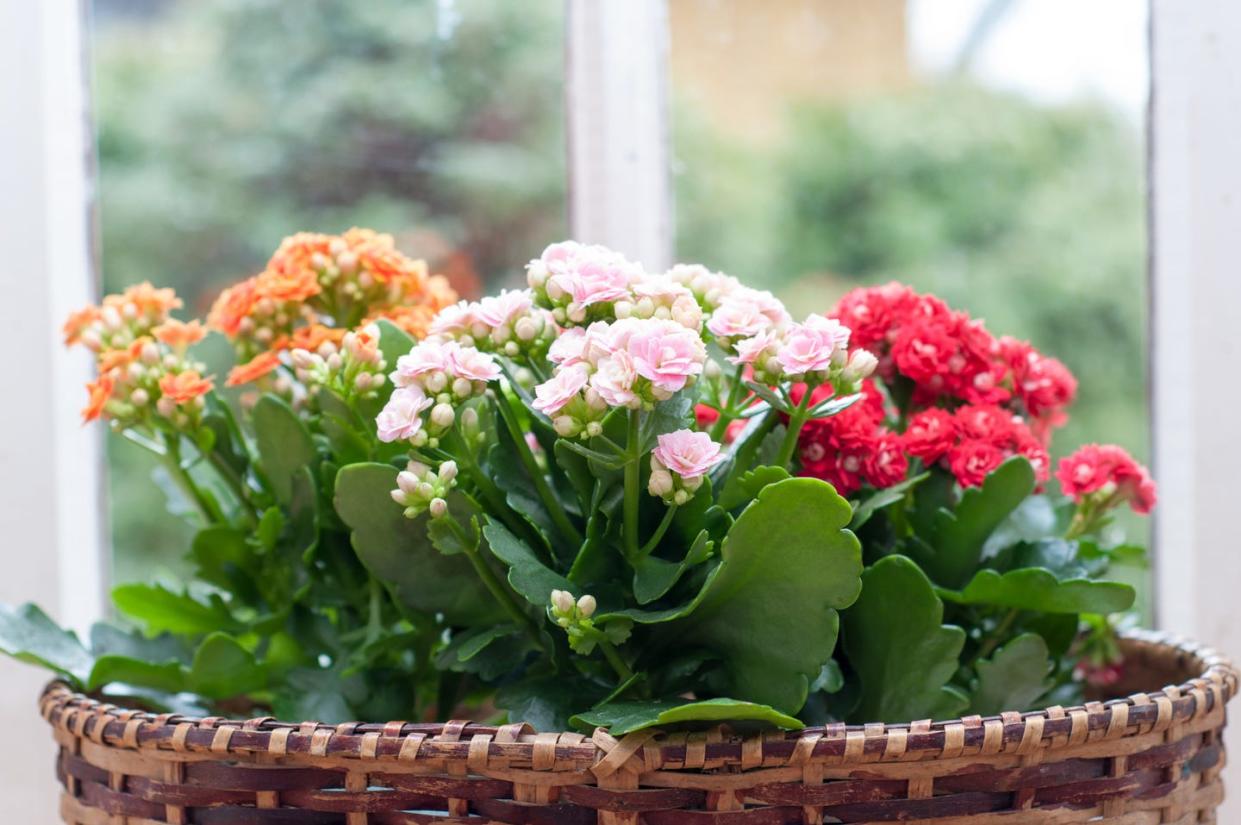
Lily of the Valley
Although lily of the valley isn't a true lily plant, it still poses a risk to your kitty! Toxic compounds can be found in all parts of the plant and can lead to vomiting, irregular heartbeat, low blood pressure, disorientation, or even seizures and a coma. These signs can be life-threatening, so be sure to keep this plant out of your home.
Toxic Components: Cardenolides
Safe Alternative: Spiderwort
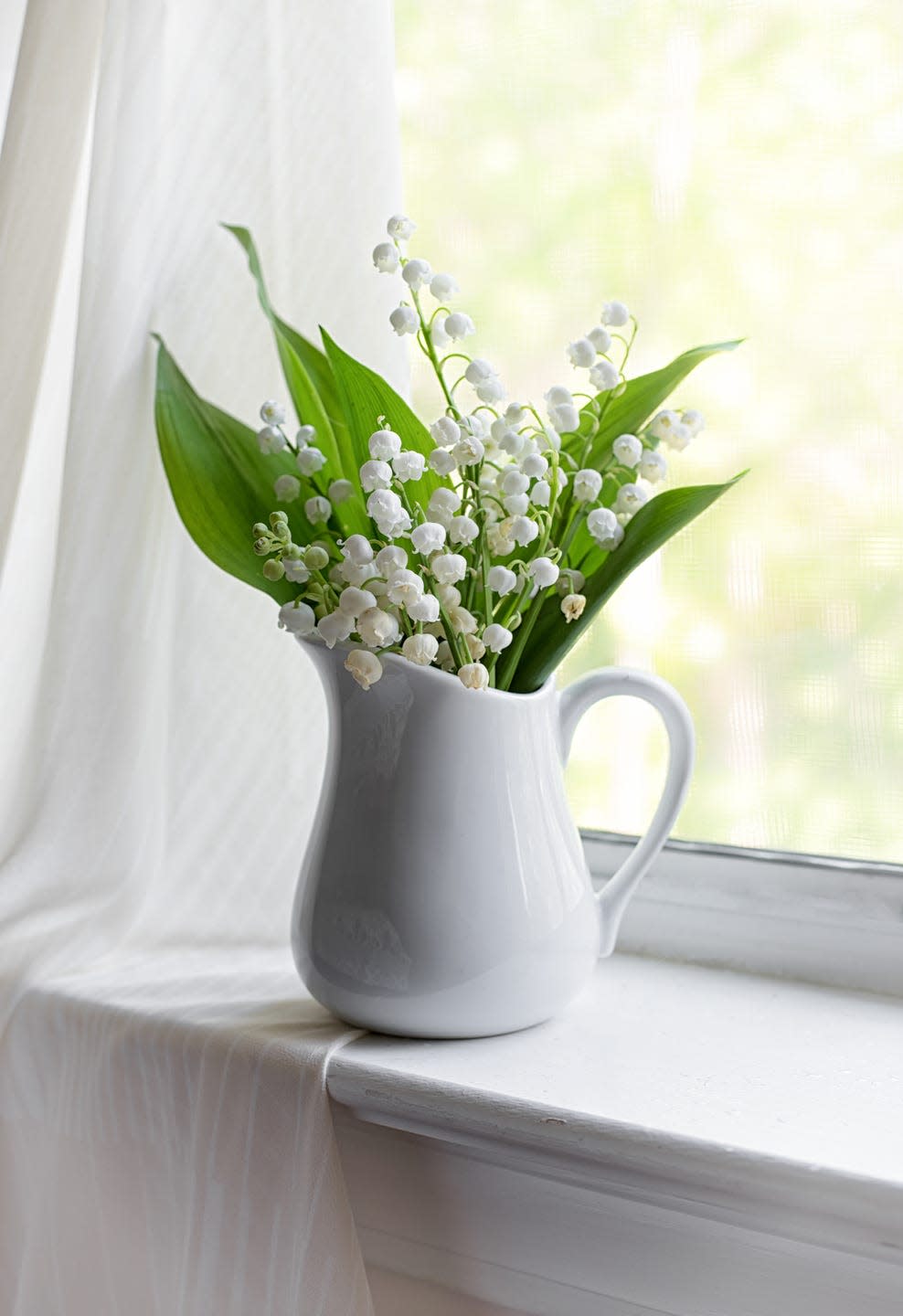
Oleander
Not only is this beautiful flower toxic to pets, but it's toxic to people, too! As for your kitties, ingesting even a small amount can cause severe symptoms like vomiting, diarrhea, abnormal heart rhythms, and possibly death. All parts of the plant are dangerous, so it’s best to keep it out of reach.
Toxic Components: Cardiac glycosides
Safe Alternative: St. John's wort
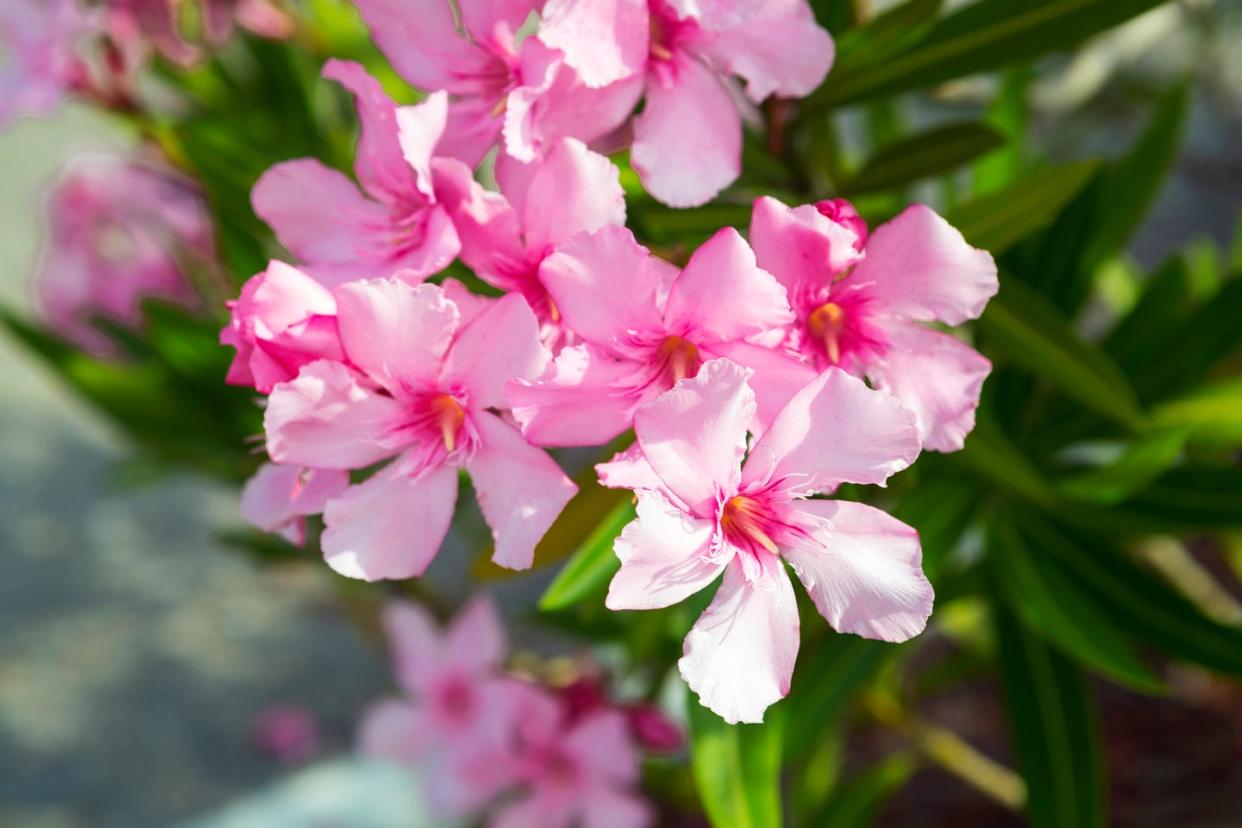
Jade Plant
Also known as "money plants" or "dollar plants," this succulent is thought to bring good luck to its owners—but the same can't be said for cats! All varieties of these plants belonging to the Crassula family are highly toxic and all parts can cause symptoms such as vomiting, depression, and incoordination.
Toxic Components: Unknown
Safe Alternative: Peperomia
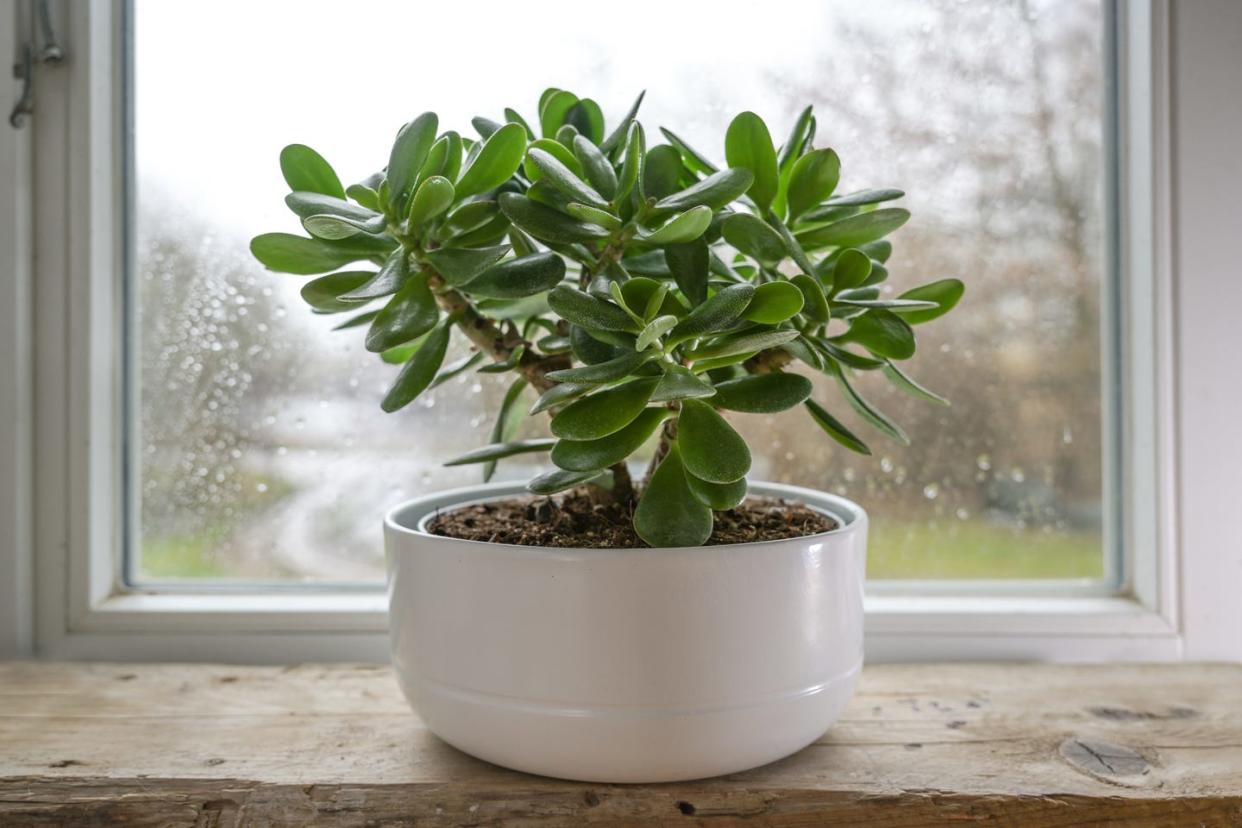
Chrysanthemums
If you're choosing your fall florals, reconsider planting mums if you have feline friends around—especially because the pretty flowers will probably attract cats. Ingestion of this plant may cause loss of coordination, drooling, vomiting, and diarrhea.
Toxic Components: Sesquiterpene, lactones, pyrethrins and other potential irritants
Safe Alternative: Marigold
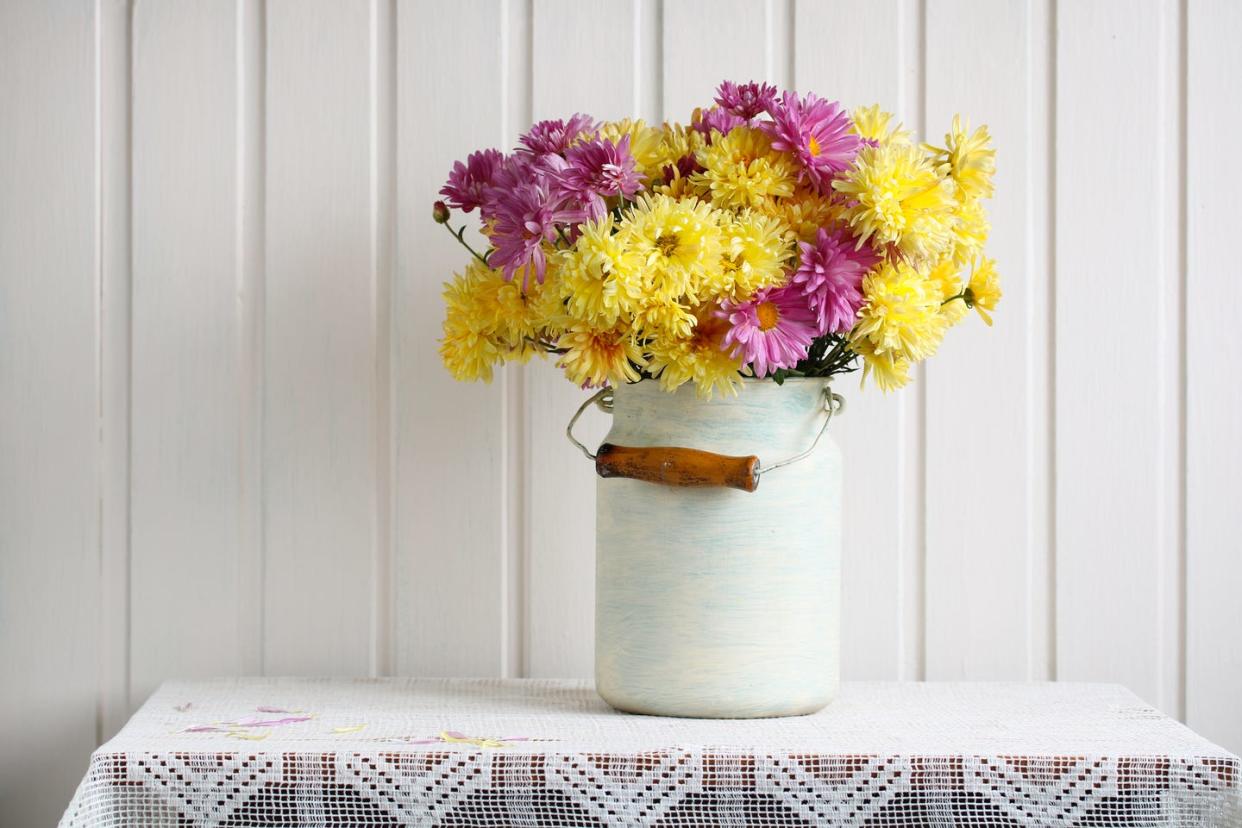
Bird of Paradise
When it comes to the bird of paradise, there are actually two different plants: Strelitzia Regniae and Caesalpinia Gilliesii. While both are toxic to cats, the Gilliesii variety is more toxic and can cause problems such as intense burning and irritation of the mouth, tongue, and lips, as well as excessive drooling, vomiting, diarrhea, and difficulty swallowing.
Toxic Components: Possibly hydrocyanic acid
Safe Alternative: Bromeliads
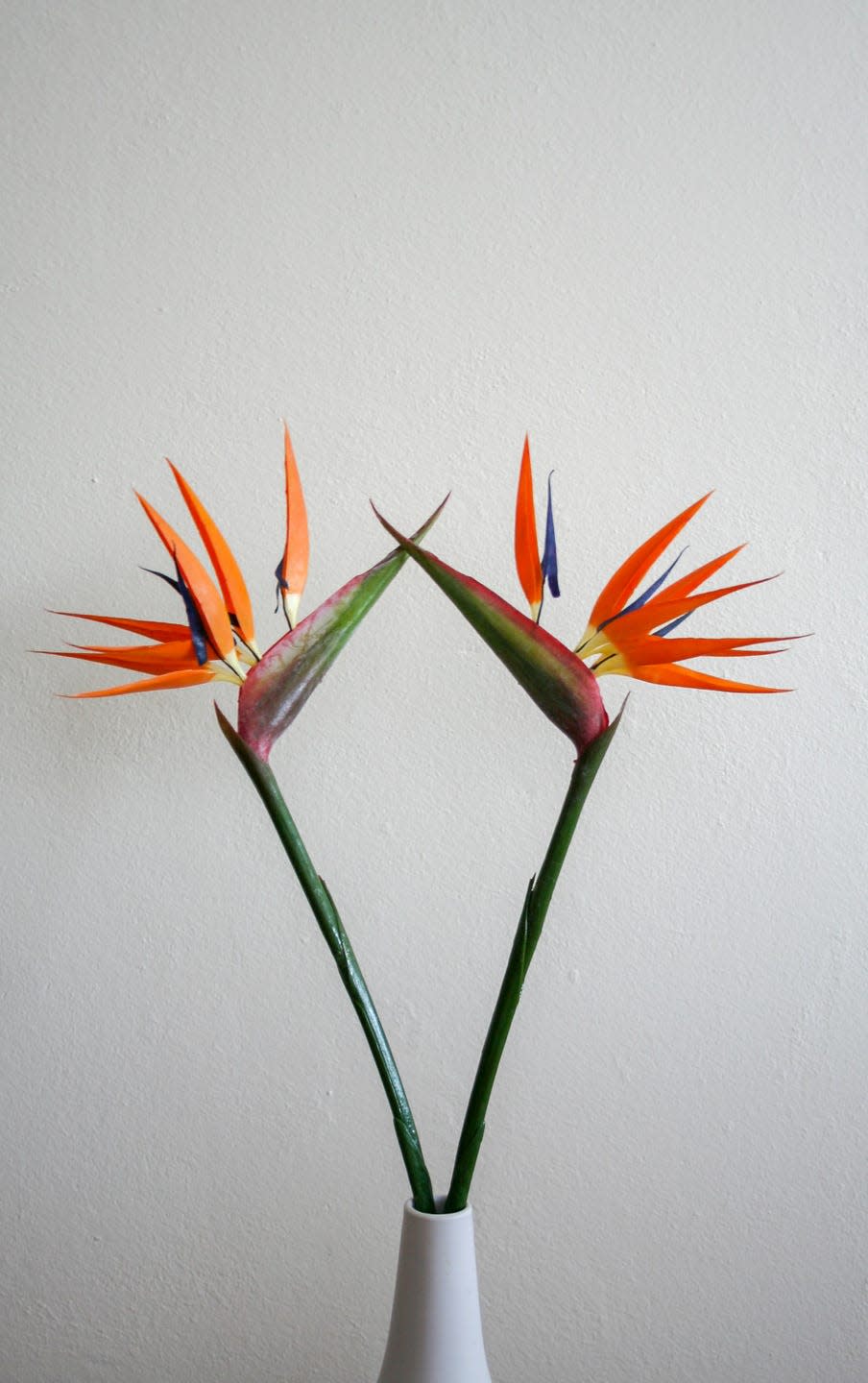
Yew
Even a small bite of this plant can be disastrous for your furry friend (dogs and horses included). The bark, needles, and fruit are all toxic—with symptoms being trembling, coordination problems, difficulty breathing, severe gastrointestinal problems, cardiac failure, or death.
Toxic Components: Taxine
Safe Alternative: Common juinper
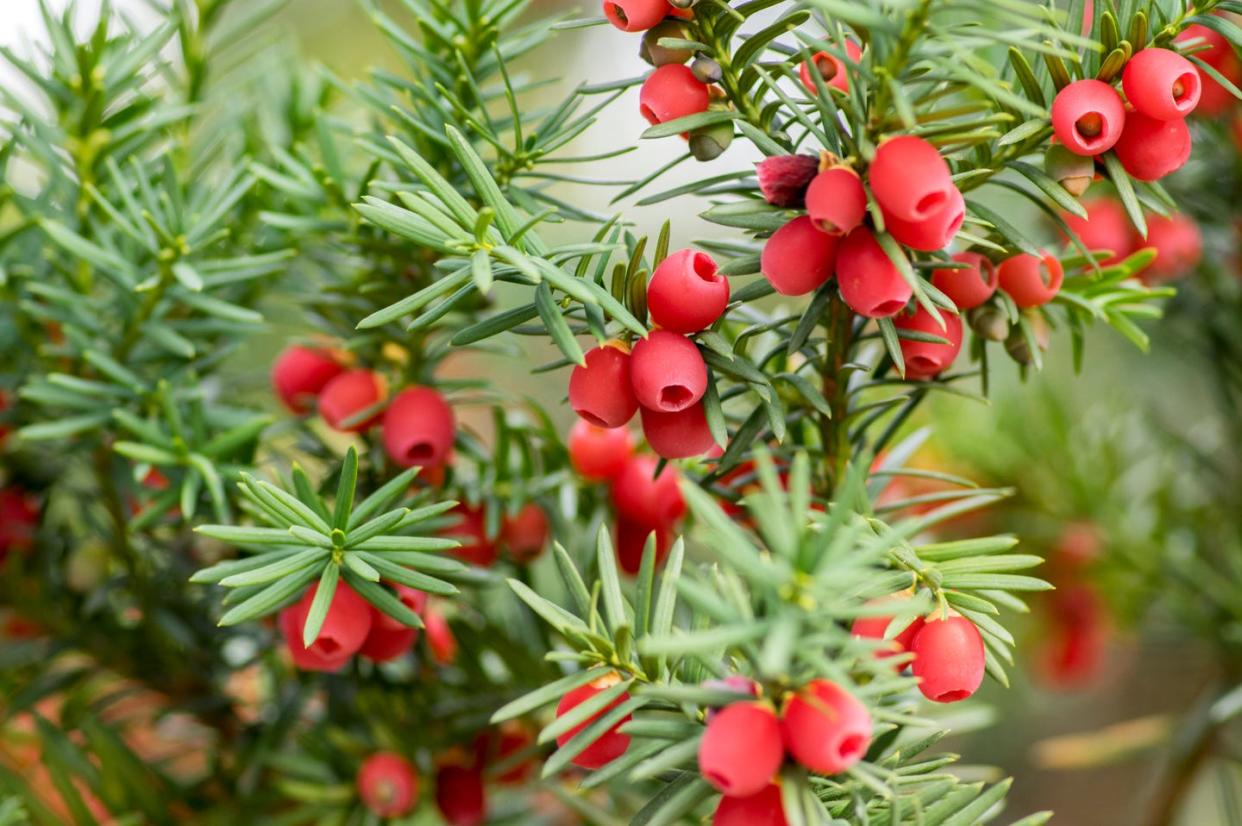
Poinsettia
Once believed to be highly toxic to cats, poinsettias actually only present a mild risk. The popular Christmas plant contains a milky sap that can cause irritation to your cat's mouth and stomach. That said, you should keep them out of reach to prevent any potential discomfort or more serious reactions, especially if your cat has a sensitive stomach.
Toxic Components: Diterpenoid euphorbol esters and saponin-like detergents
Safe Alternative: Polka dot plant
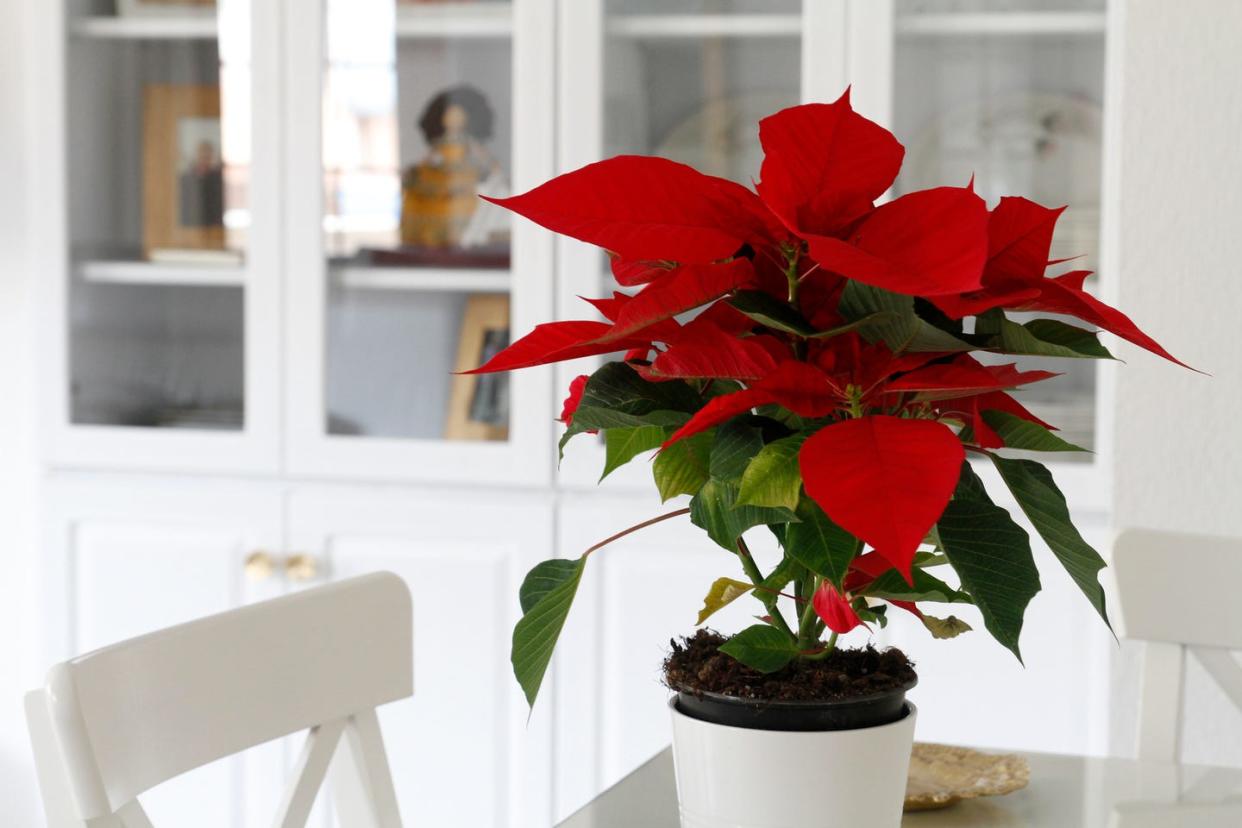
You Might Also Like
